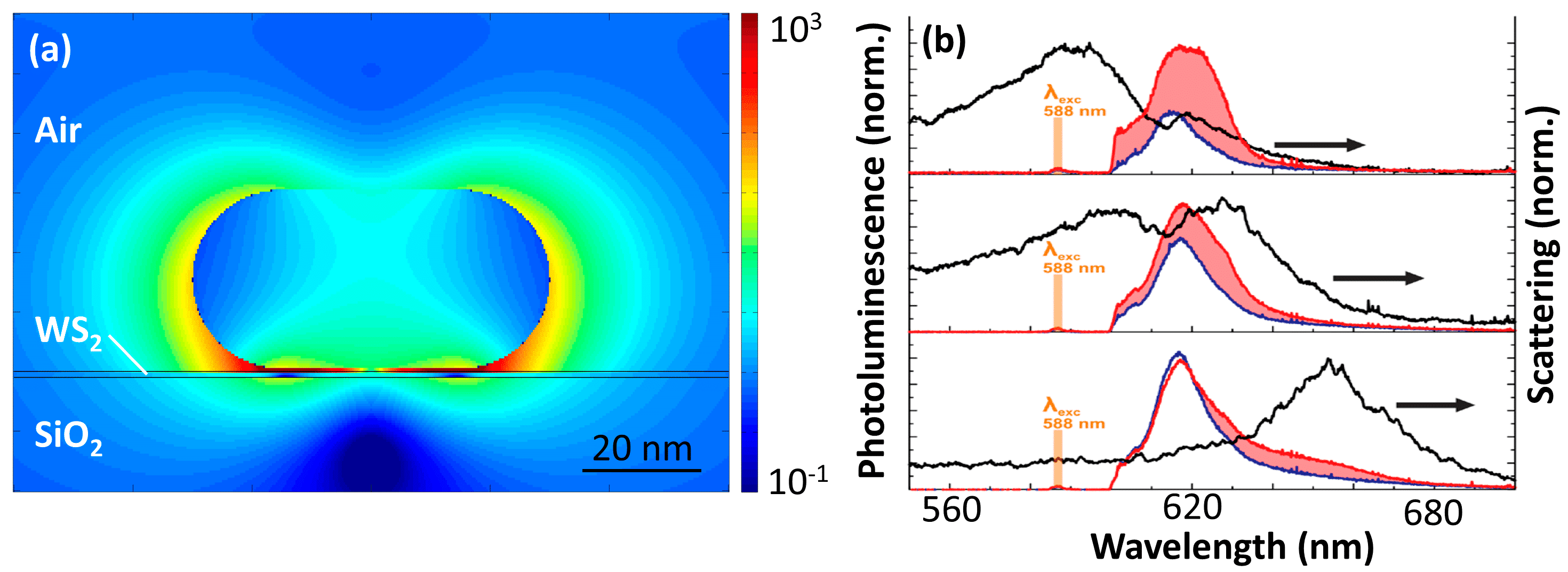
Nanoantenna-Enhanced Light-Matter Interaction in Atomically thin WS2
Atomically thin transition metal dichalcogenides (TMDCs) are promising two-dimensional materials for optical and opto-electronic devices [1], because they exhibit an optical band gap in the visible regime. Monolayers absorb more than 10% of the light at their excitonic resonance and show photoluminescence [2]. However, the absorption length of TMDC monolayers is extremely short and the photoluminescence quantum yield is low. Therefore, strategies are needed to optimize light-matter interaction.
In this paper we present a combined experimental and theoretical study of a novel hybrid system, consisting of a plasmonic nanoantenna and an atomically thin tungsten disulphide (WS2) layer. We use gold nanorods as antennas, which are dropcast onto the WS2 monolayer. Due to the plasmon resonance of the nanoparticles, strongly enhanced optical near-fields are generated within the WS2. We observe an increase in photoluminescence intensity by more than one order of magnitude, resulting from a combined absorption and emission enhancement of the WS2 exciton. We further investigate the antenna-monolayer coupling with respect to the spectral position of the plasmon resonance, which is tuned across the exciton resonance at 618 nm wavelength by varying the lengths of the nanorods. The plasmon resonance shifts to longer wavelengths with increasing antenna length and a prominent, narrow minimum is present in the broad plasmon spectrum. Additional simulations performed with the MNPBEM toolbox [3] allow us to attribute this minimum to the coupling of exciton and plasmon and are in excellent agreement with the experimental findings.

Fig. 1: (a) Calculated near-field intensity of the hybrid system. (b) Emission-polarization resolved photoluminescence spectra (coloured lines) compared to scattering spectra (black lines) for different rod lengths.
The tailored hybrid nanoantenna-monolayer system lights the way to efficient photodetectors, solar cells, light emitting and conceptually new valleytronic devices based on two-dimensional materials.
[1] Q. H. Wang et al., Nat. Nanotechnol. 7, 699–712 (2012).
[2] P. Tonndorf et al., Opt. Express 21, 4908–4916 (2013).
[3] U. Hohenester and A. Trügler, Comp. Phys. Commun. 183, 370 (2012).
andreas.truegler@uni-graz.at
Powered by Eventact EMS